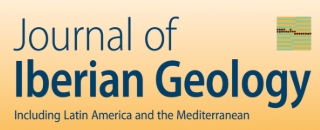New palynostratigraphic data from the Kungurian (Cisuralian) Guncina Formation
“At the end of the Cisuralian (early Permian), the Kungurian represents a key phase in plant evolution and in the development of associated pollen and spores. During the Artinskian, a noticeable shift began, with vegetation and palynofloras transitioning from those typical of humid conditions to those better adapted to arid environments, a trend that persisted through the Kungurian. Despite its importance, biostratigraphic studies of Euramerican palynofloras from this time are scarce. This study addresses the gap by examining the palynological content of the Guncina Formation in the eastern Southern Alps, which yields an exceptionally well-preserved microflora. Detailed analysis of these microfossils sheds new light on the composition and diversity of Cisuralian palynofloras and extends to the Kungurian in the Euramerica phytoprovince, the stratigraphic range of the bisaccate pollen Lueckisporites virkkiae and Falcisporites stabilis. These findings refine the biostratigraphic framework of the Cisuralian, enhancing our understanding of the Permian palynological record in the Euramerican phytoprovince.”
